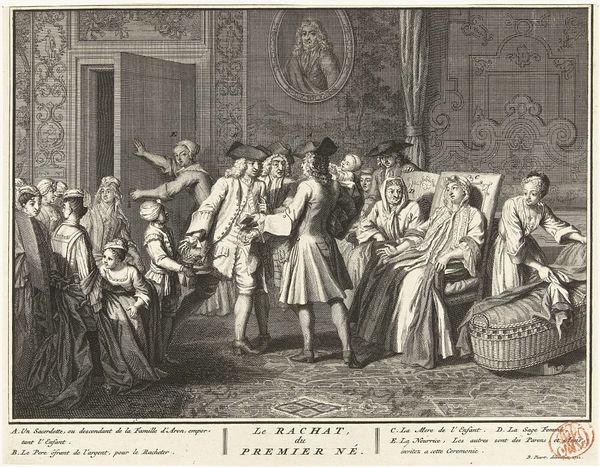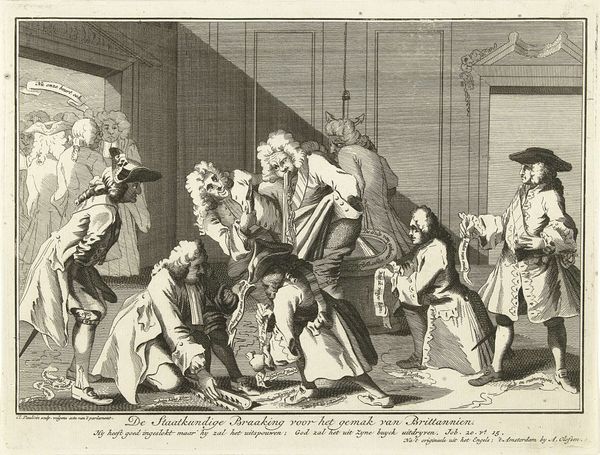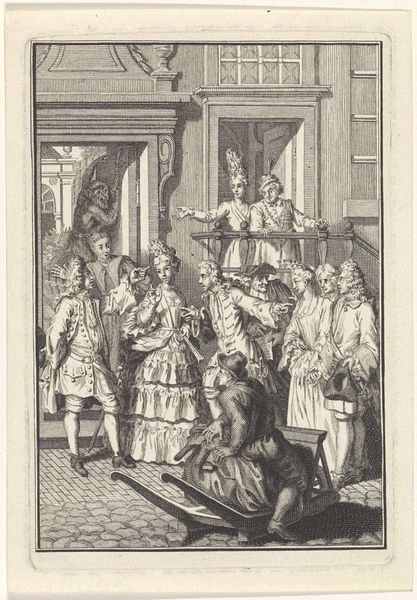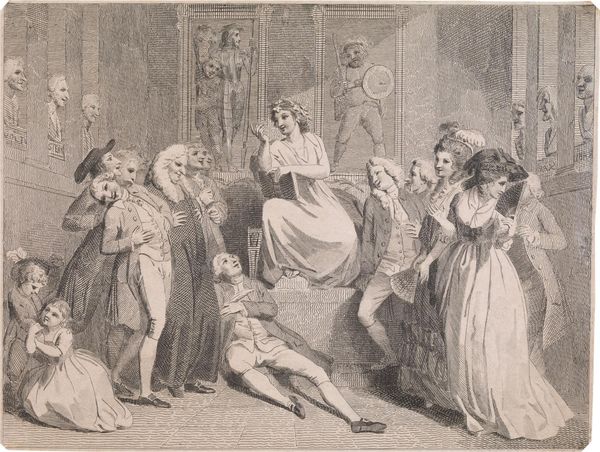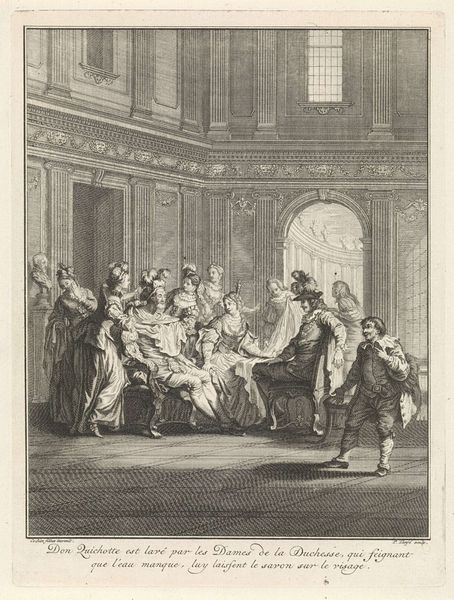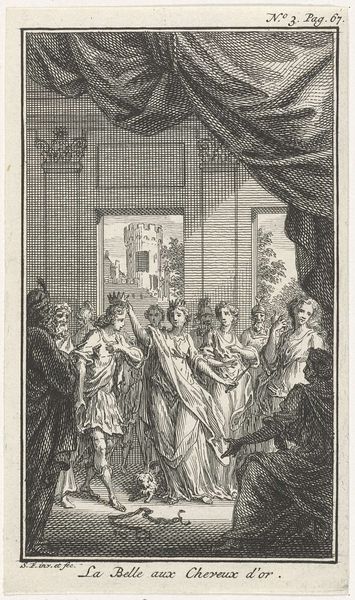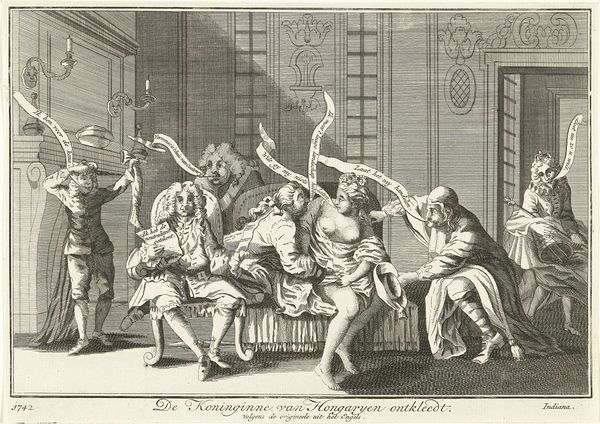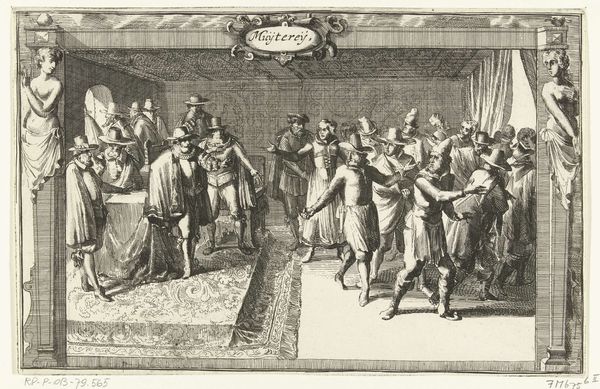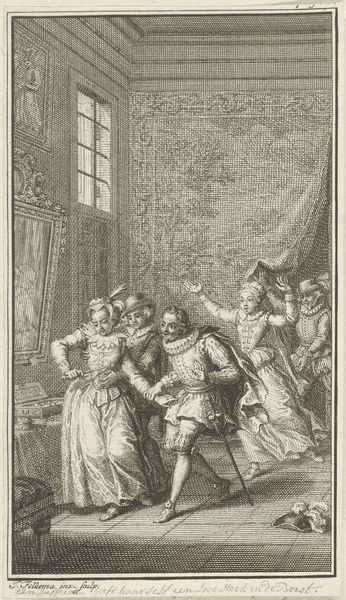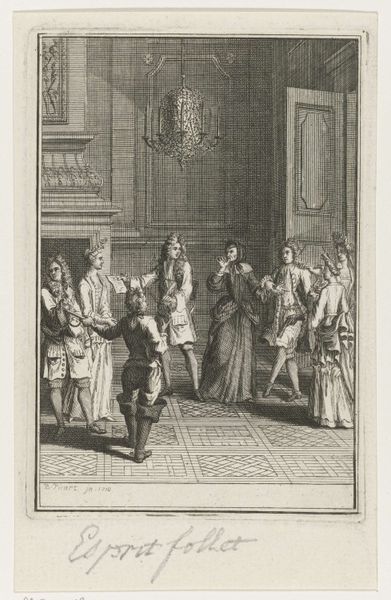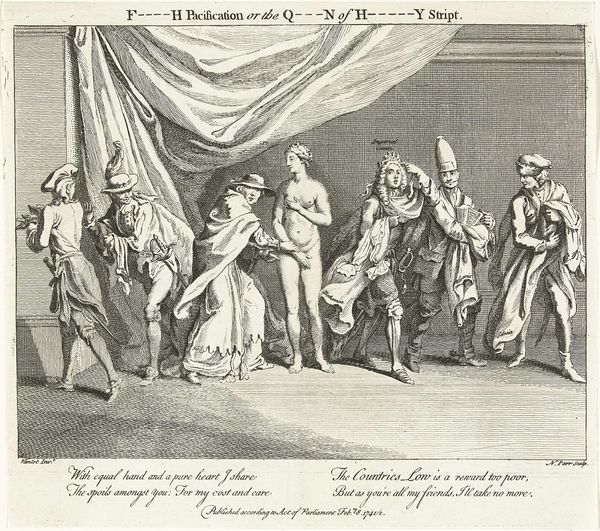
engraving
#
baroque
#
pen drawing
#
genre-painting
#
history-painting
#
engraving
Dimensions: height 153 mm, width 210 mm
Copyright: Rijks Museum: Open Domain
Curator: Today we’re observing "Joodse besnijdenis," or "Jewish Circumcision," an engraving made between 1720 and 1725 by Bernard Picart. The print depicts exactly that: a circumcision ceremony in what looks like a well-to-do home. It is currently held in the Rijksmuseum. Editor: What a flurry of details! It looks like a whirlwind captured in ink, or maybe an old play being performed with exaggerated gestures. Does anyone else see that dramatic flair? The cross-hatching creates so much shadow! Curator: It's precisely that dramatic flair we can link to its Baroque style. You can see it reflected in other period genre scenes or history paintings through its intricate detail and somewhat staged arrangement. This suggests the artist intended to give an outsider an explicit and, I might add, very composed and formal depiction. Editor: Formal, yes. Cold? Perhaps a touch. Observe the composition, with its figures packed tightly together, yet the eye doesn't quite find warmth or connection. They almost resemble objects in an elaborate display, items of high status flaunted on purpose. Is it reportage or just... a showcase? Curator: That tension between objective recording and constructed tableau is quite central to understanding Picart's work here. He aimed to meticulously document Jewish customs, for a wider audience, thus he chose a medium--engraving--allowing for relatively easy replication and dissemination, turning cultural observations into a commercial enterprise. It raises the question, who exactly was this made for, and how was it distributed? Editor: Oh! You’re suggesting it might be, shall we say, 'artistic anthropology' of its time? And sold as exotic slices of life? It lends an extra layer to my feelings then: something both beautiful and just a tad... unsettling. That crowd observing the ceremony - are they guests or witnesses in a peepshow? Curator: Exactly! What better way to describe early 18th-century Europe's curiosity towards cultural 'others?' But, let’s be cautious. Though perhaps unsettling to contemporary viewers, there's inherent value in the recording itself—the depiction of the room’s interior, the textiles. That in itself speaks volumes of contemporary consumption practices of both Jewish and Christian populations in the area. Editor: Alright, alright! Perhaps our Picart unknowingly made both art *and* societal critique at the same time? An unsettling gem from a long lost era, preserved, for our pondering pleasure? Curator: A good summary, perhaps! Next piece, perhaps something less, ah, 'loaded'?
Comments
No comments
Be the first to comment and join the conversation on the ultimate creative platform.
